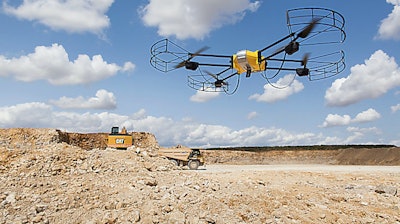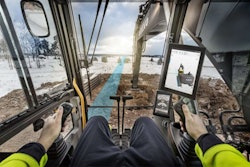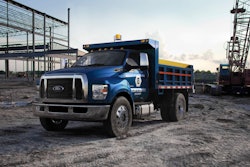 Photo credit: Caterpillar
Photo credit: CaterpillarThe Federal Aviation Administration today announced that it has finalized regulations on the commercial use of drones in U.S. airspace.
The official regulations, which will take effect in August, aren’t all that different from the restrictions businesses agreed to operate within as part of the Section 333 exemption formerly required for all commercial drone flights. The main difference is that businesses no longer need the exemption, which required a sometimes long and confusing application process
RELATED >> How Rogers-O’Brien Construction deployed a drone fleet throughout its workflow
With that hurdle out of the way and a clear set of rules for commercial pilots to follow, the FAA and the U.S. Department of Transportation say the regulations open “pathways towards fully integrating [Unmanned Aerial Systems] into the nation’s airspace,” adding that the drone industry is expected to generate 100,000 jobs and $82 billion for the U.S. economy over the next 10 years.
“We are part of a new era in aviation, and the potential for unmanned aircraft will make it safer and easier to do certain jobs, gather information, and deploy disaster relief,” said U.S. Transportation Sec. Anthony Foxx in a prepared statement. “We look forward to working with the aviation community to support innovation, while maintaining our standards as the safest and most complex airspace in the world.”
While the new rules will be welcome with open arms by construction, surveying, and other private sector businesses, as well as DOTs, as of right now the current rules, which require the drone to remain within the operator’s direct line of sight, make it impossible for drone delivery services companies like Amazon are pushing for.
The following are the primary rules for operation under the new regulations:
- Drone must weigh 55 pounds or less.
- Must be flown at speeds less than 100 mph.
- Operator must ensure the drone stays within his/her visual line of sight (VLOS). Though the previous Section 333 rules allowed for a first-person flight camera to be used as long as the VLOS requirement was satisfied in other ways, the official ruling now says that the aircraft must “remain close enough to the remote pilot in command and the person manipulating the flight controls of the small UAS for those people to be capable of seeing the aircraft with vision unaided by any device other than corrective lenses.”
- Drones cannot be flown above 400 feet, as opposed to the 500 feet allowed under the previous rules.
- Drone can only be flown when weather affords at least 3 miles visibility.
- Though a manned aircraft pilot’s license is not required, at least on person present during drone operation must hold a remote pilot airman certificate with a small UAS rating.
- Unlike the former restriction, the person actually holding the controls of the drone is not required to hold this remote pilot’s license. The only requirement on the operator is that he or she be 16 years old and have a certified remote pilot present to oversee operation.
- Though an airworthiness inspection is no longer required by the FAA, pilots are required to do a preflight check to ensure safe operation.
- No person may act as a remote pilot in command for more than one unmanned aircraft operation at one time.
- Drones may not be operated from moving vehicles or in any other “reckless” manner.
Some of these rules may be waived through an application process to the FAA if the operator can prove a flight can still be conducted in a safe manner. An online portal will be available to apply for these waivers in the coming months.
According to the FAA the required remote pilot certification will involving passing “an initial aeronautical knowledge test at an FAA-approved knowledge testing center or have an existing non-student Part 61 pilot certificate. If qualifying under the latter provision, a pilot must have completed a flight review in the previous 24 months and must take a UAS online training course provided by the FAA. The TSA will conduct a security background check of all remote pilot applications prior to issuance of a certificate.”
The full listing of commercial drone rules can be found here.











